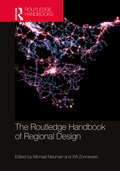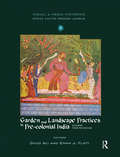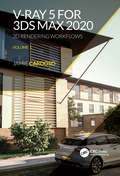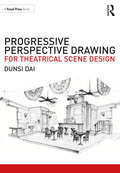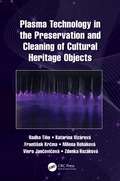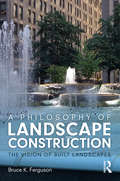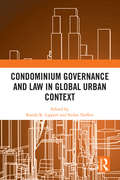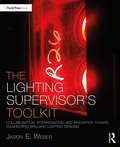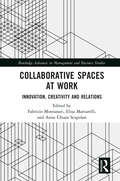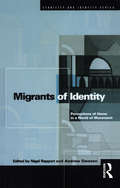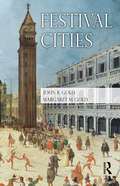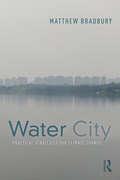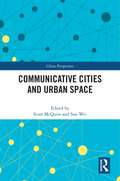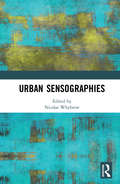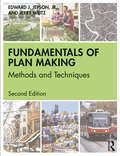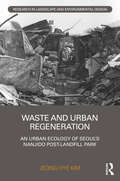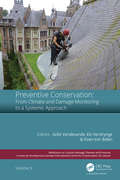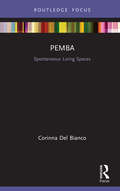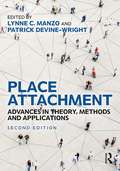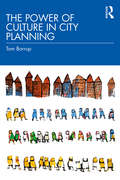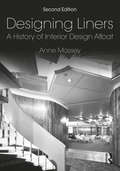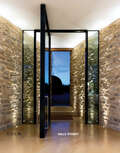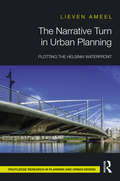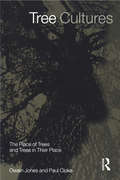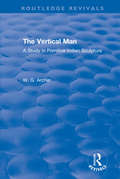- Table View
- List View
The Routledge Handbook of Regional Design
by Michael NeumanThe Routledge Handbook of Regional Design explores contemporary research, policy, and practice that highlight critical aspects of strategy-making, planning, and designing for contemporary regions—including city regions, bioregions, delta regions, and their hybrids. As accelerating urbanization and globalization combine with other forces such as the demand for increasing returns on investment capital, migration, and innovation, they yield cities that are expanding over ever-larger territories. Moreover, these polycentric city regions themselves are agglomerating with one another to create new territorial mega-regions. The processes that beget these novel regional forms produce numerous and significant effects, positive and negative, that call for new modes of design and management so that the urban places and the lives and well-being of their inhabitants and businesses thrive sustainably into the future. With international case studies from leading scholars and practitioners, this book is an important resource not just for students, researchers, and practitioners of urban planning, but also policy makers, developers, architects, engineers, and anyone interested in the broader issues of urbanism.
Garden and Landscape Practices in Pre-colonial India: Histories from the Deccan (Visual and Media Histories)
by Daud Ali; Emma J. FlattThis book presents a set of new and innovative essays on landscape and garden culture in precolonial India, with a special focus on the Deccan. Most research to date has concentrated on the comparatively well preserved gardens and built landscapes of the celebrated Mughal empire, giving the impression that they have been lacking in other times and regions. Not only does this volume provide a corrective to such assumptions, it also moves away from traditional art-historical approaches by posing new questions and exploring hitherto neglected source materials. The contributors understand gardens in two related ways: first as real or imagined spaces and manipulated landscapes that are often invested with pronounced semiotic density; and second as congeries of institutions and practices with far-reaching social ramifications for the constitution of elite societies. The essays here present a multi-disciplinary approach to the study of garden culture in precolonial India, and together suggest several new and exciting directions of enquiry for those working in the Deccan, Mughal India, and beyond.
V-Ray 5 for 3ds Max 2020: 3D Rendering Workflows Volume 1 (3D Photorealistic Rendering)
by Jamie CardosoIncrease the photorealism of your 3d visualizations with enhanced toolsets of V-Ray 5 for 3ds Max 2020. The book is filled with colorful illustrations depicting step-by-step tutorials about the process of creating a photorealistic day-and-night exterior scene. Each tutorial includes a 3d project scene to guide users through the production and the post-production processes. The book begins with an overview of the best techniques to approach clients via emails, calls, meetings, and via social media. There are also key insights into the best practices of handling projects, pricing, contracts, invoices, the pre-production, production, and the post-production, to name but a few. Throughout the book, users are taken through VRayMtl functions such as Diffuse, Roughness, Reflect, Glossiness, Metalness, Refract, Index of Refraction (IOR), Abbe number, Fog color, Translucency, BRDF, Coat, Sheen, and Bump. Also, users will learn how to use procedural maps such as VRayBitmap, VRayTriplanarTex, Bricks, Metals, Carpaint, VRayDisplacementMod, VRayUVWRandomizer, VRayMultiSubTex, VRayPointCloudColor, VRayDirt, VRayAerialPersepective, VRayLightMtl, VRayMtlWrapper, VRayOverrideMtl, VRay2SidedMtl, VRayBlendMtl, and VRayEdgesTex. In addition, there are tips and tricks accompanied with videos highlighting how to create VR interactive apps using Verge 3d; how to create verified views; and how to use plug-ins and scripts such as Project Manager, Auto grid pivot point, GarageFarm, Zmapping, gobotree, and VIShopper. Finally, users will have a rare insight into all functionalities of a VRay camera, VRayLight objects, Render settings, Frame buffer, Global switches, IPR options, Bucket and Progressive image samplers, Image filters, Global DMC, Color mapping, Brute force global illumination, Light cache, Color management, Distributed rendering, Render elements, VRay image file format, VFB History settings, VFB Lens Effects, LightMix, Film tonemap, Hue/Saturation, Lookup Table, and much more. Key Features This book deals with real projects/3d scenes and delivers up-to-date V-Ray 5 functionalities and production workflows using 3ds Max 2020 This book has professional supporting files ready to open and explore This book details the meticulous step-by-step processes of creating jaw-dropping 3d renderings This book includes unrivaled in-depth coverage of V-Ray 5 for 3ds Max 2020 This book includes 3d rendering methodologies currently used by key industry players Author Jamie Cardoso is a renowned author, reviewer, computer artist, and technologist, with years of experience in creating state-of-the-art 3d photomontages, verified views, VR, AR, XR, MR, Stereos, and photorealistic interior and exterior visualizations for architects and designers.
Progressive Perspective Drawing for Theatrical Scene Design
by Dunsi DaiProgressive Perspective Drawing for Theatrical Scene Design provides theatrical scenic designers with the tools to create quick and precise perspective drawings. The book explores three methods of perspective drawings at progressive skill levels – the Grid Method, the Frame Method, and the Freehand with References Method – allowing scenic designers to build on their drawing technique consistently. Replete with discussions on pencil techniques, step by step instructions, and set sketches from professional set design projects, this volume guides readers from the basics of the cube system to the more challenging freehand drawing. Progressive Perspective Drawing for Theatrical Scene Design is an excellent resource for students of Scene Design, Stage Design, Set Design, Scenography, Stagecraft, and Design for Theatre, as well as an accessible self-study guide for those with an interest in scene design. The book includes access to downloadable pre-made perspective grids, to help readers familiarize themselves with one and two vanishing point grids.
Plasma Technology in the Preservation and Cleaning of Cultural Heritage Objects
by Radko Tiňo Katarína Vizárová František Krčma Milena Reháková Viera Jančovičová Zdenka KozákováScientists have long been looking for alternative methods for the cleaning of historical and cultural museum objects as conventional methods often fail to completely remove surface films, leaving contamination and surface residues behind. Low-temperature plasmas have recently been found to provide a new, efficient and durable approach that maintains the safety of both the materials and personnel. This book is the first to introduce the emerging use of low-temperature plasmas in the cleaning and decontamination of cultural heritage items. It provides a comprehensive exploration of the new possibilities of cleaning objects with plasma, before providing a practice guide to the individual cleaning methods and an overview of the technologies and conditions used in the different cleaning regimes. It is an ideal reference for researchers in plasma physics, in addition to professionals working in the field of historical and cultural conservation. Features: Provides a thorough overview of the cleaning potential of emerging plasma technologies in accessible language for professional restorers and conservators without a scientific background Includes the latest case studies from the field, which have not been published elsewhere yet Authored by a team of experts in the field
A Philosophy of Landscape Construction: The Vision of Built Spaces
by Bruce FergusonA Philosophy of Landscape Construction outlines a philosophy of values in landscape construction, demonstrating how integral structures, such as pavements and walls, constitute a key element to how people interact with and inhabit the final design. The book discusses how these structures enable, assist and care for people, negotiating between the dynamic processes of site ecosystems and the soil on which they are founded. They articulate spatial, functional, cultural and ecological meanings. Within this theoretical framework, designers will learn to recognize and insert a set of core values into the most technical design stages to reach their full potential. By offering a new perspective on landscape construction, moving away from the exclusively technical characteristics, this book allows landscape architects to realise the ideal vision for their designs. It is abundantly illustrated with examples from which designers can learn both successes and failures and will be an essential companion to any study of built landscapes.
Condominium Governance and Law in Global Urban Context
by Randy K. Lippert; Stefan TreffersThis book examines condominium, property, governance, and law in international and conceptual perspective and reveals this urban realm as complex and mutating. Condominiums are proliferating the world over and transforming the socio-spatial organization of cities and residential life. The collection assembles arguably the most prominent scholars in the world currently working in this broad area and situated in multiple disciplines, including legal and socio-legal studies, political science, public administration, and sociology. Their analyses span condominium governance and law on five continents and in nine countries: the United States (US), China, Australia, the United Kingdom (UK), Canada, South Africa, Israel, Denmark, and Spain. Neglected issues and emerging trends related to condominium governance and law in cities from Tel Aviv to Chicago to Melbourne are discerned and analysed. The book pursues fresh empirical inquiries and cogent conceptual engagements regarding how condominiums are governed through law and other means. It includes accounts of a wide range of governance difficulties including chronic anti-social owner behaviour, short-term rentals, and even the COVID-19 pandemic, and how they are being dealt with. By uncovering crucial cross-national commonalities, the book reveals the global urban context of condominium governance and law as empirically rich and conceptually fruitful. The book will appeal to researchers and students in socio-legal studies, law, sociology, political science, urban studies, and public administration as well as journalists, social activists, policymakers, and condo owners/board members.
The Lighting Supervisor's Toolkit: Collaboration, Interrogation, and Innovation toward Engineering Brilliant Lighting Designs (The Focal Press Toolkit Series)
by Jason E. WeberThe Lighting Supervisor’s Toolkit guides readers through the Lighting Supervisor’s production process with an emphasis on the importance of the collaborative nature of the role. Lifting the veil on a process regularly learned on the job, this book offers a deeper understanding of the role of Lighting Supervisor and how to take lighting designs from dreams to reality. Readers will learn to communicate with designers, analyze drawings, plan installations, document decisions, supervise crews, and innovate out-of-the-box solutions. Providing guidance for technically focused individuals seeking deeper understanding of the profession, The Lighting Supervisor’s Toolkit is ideal for students and professional technicians looking to take on important leadership roles in theatrical and entertainment lighting.
Collaborative Spaces at Work: Innovation, Creativity and Relations (Routledge Advances in Management and Business Studies)
by Fabrizio Montanari Elisa Mattarelli Anna Chiara ScapolanCollaborative spaces are more than physical locations of work and production. They present strong identities centered on collaboration, exchange, sense of community, and co-creation, which are expected to create a physical and social atmosphere that facilitates positive social interaction, knowledge sharing, and information exchange. This book explores the complex experiences and social dynamics that emerge within and between collaborative spaces and how they impact, sometimes unexpectedly, on creativity and innovation. Collaborative Spaces at Work is timely and relevant: it will address the gap in critical understandings of the role and outcomes of collaborative spaces. Advancing the debate beyond regional development rhetoric, the book will investigate, through various empirical studies, if and how collaborative spaces do actually support innovation and the generation of new ideas, products, and processes. The book is intended as a primary reference in creativity and innovation, workspaces, knowledge and creative workers, and urban studies. Given its short chapters and strong empirical orientation, it will also appeal to policy makers interested in urban regeneration, sustaining innovation, and social and economic development, and to managers of both collaborative spaces and companies who want to foster creativity within larger organizations. It can also serve as a textbook in master’s degrees and PhD courses on innovation and creativity, public management, urban studies, management of work, and labor relations.
Migrants of Identity: Perceptions of 'Home' in a World of Movement (Ethnicity And Identity Ser.)
by Nigel RapportGlobal movement is commonly characterized as one of the quintessential experiences of our age. Market forces, territorial conflicts and environmental changes uproot an increasing number of people, while mass communication, travel, tourism, and a global market of commodities, texts, tastes, fashions and ideologies place individuals more than ever in a global arena. As traditional conceptions of individuals as members of stationary, fixed and separate societies and cultures no longer convince, to what extent does movement become central to individuals' self-conceptions? How do people cultivate, negotiate, nurture and maintain an identity? To what extent do individuals become ‘migrants of identity' whose home is movement?Defining ‘home' as ‘where one best knows oneself', this pioneering book explores the various ways in which people perceive themselves to be ‘at home' in today's world. Through a series of case studies, authors show that for a world of travellers, labour migrants, exiles and commuters, ‘home' comes to be found in behavioural routines and techniques, in styles of dress and address, in memories, myths and stories, in jokes and opinions. In short, people who live their lives in movement make sense of their lives as movement.
Festival Cities: Culture, Planning and Urban Life (Planning, History and Environment Series)
by John R. Gold Margaret M. GoldFestivals have always been part of city life, but their relationship with their host cities has continually changed. With the rise of industrialization, they were largely considered peripheral to the course of urban affairs. Now they have become central to new ways of thinking about the challenges of economic and social change, as well as repositioning cities within competitive global networks. In this timely and thought-provoking book, John and Margaret Gold provide a reflective and evidence-based historical survey of the processes and actors involved, charting the ways that regular festivals have now become embedded in urban life and city planning. Beginning with David Garrick’s rain-drenched Shakespearean Jubilee and ending with Sydney’s flamboyant Mardi Gras celebrations, it encompasses the emergence and consolidation of city festivals. After a contextual historical survey that stretches from Antiquity to the late nineteenth century, there are detailed case studies of pioneering European arts festivals in their urban context: Venice’s Biennale, the Salzburg Festival, the Cannes Film Festival and Edinburgh’s International Festival. Ensuing chapters deal with the worldwide proliferation of arts festivals after 1950 and with the ever-increasing diversifycation of carnival celebrations, particularly through the actions of groups seeking to assert their identity. The conclusion draws together the book’s key themes and sketches the future prospects for festival cities. Lavishly illustrated, and copiously researched, this book is essential reading not just for urban geographers, social historians and planners, but also for anyone interested in contemporary festival and events tourism, urban events strategy, urban regeneration regeneration, or simply building a fuller understanding of the relationship between culture, planning and the city.
Water City: Practical Strategies for Climate Change
by Matthew BradburyWater City offers practical solutions to some of the environmental challenges facing 21st-century cities as a result of climate change. The dense compact nature of the contemporary city makes it difficult to generate urban resilience to the effects of climate change, particularly coastal and pluvial flooding. This book describes a design-led remediation methodology that draws on catchment planning and GIS mapping and analysis to redefine the city as a series of hydrological and ecological systems. Six case studies test the presented methodology, two greenfield and four brownfield sites based in the UK, USA, New Zealand and China. Each case study is illustrated with GIS maps and perspectives. Specific solutions to the environmental problems that will be intensified by climate change are presented. Water City describes adaptation strategies to help practitioners in the urban landscape tackle these issues and make our cities better places to live. This practical guide is a key read for professionals and stakeholders in landscape architecture, urban design, planning and all those interested in how climate change will affect the future of our cities.
Communicative Cities and Urban Space (China Perspectives)
by Scott McQuireCities have long been recognized as key sites for fostering new communication practices. However, as contemporary cities experience major changes, how do diverse inhabitants encounter each other? How do cities remember? What is the role of the built environment in fostering sites for public communication in a digital era? Communicative Cities and Urban Space offers a critical analysis of contemporary changes in the relation between urban space and communication. This volume seeks to understand the situatedness of contemporary communication practices in diverse contexts of urban life, and to explore digitized urban space as a historically specific communicative environment. The essays in this book collectively propose that the concept of the ‘communicative city’ is a productive frame for rethinking the above questions in the context of 21st-century ‘media cities’. They challenge us to reconsider qualities such as openness, autonomy and diversity in contemporary urban communication practices, and to identify factors that might expand or constrict communicative possibilities. Students and scholars of communication studies and urban studies would benefit from this book.
Urban Sensographies
by Nicolas WhybrowUrban Sensographies views the human body as a highly nuanced sensor to explore how various performance-based methods can be implemented to gather usable ‘felt data’ about the environment of the city as the basis for creating embodied mappings. The contributors to this fascinating volume seek to draw conclusions about the constitution, character and morphology of urban space as public, habitable and sustainable by monitoring the reactions of the human body as a form of urban sensor. This co-authored book is centrally concerned, as a symptom of the degree to which cities are evolving in the 21st century, to examine the effects of this change on the practices and behaviours of urban dwellers. This takes into account such factors as: defensible, retail and consumer space; legacies of modernist design in the built environment; the effects of surveillance technologies, motorised traffic and smart phone use; the integration of ‘wild’ as well as ‘domesticated’ nature in urban planning and living; and the effects of urban pollution on the earth’s climate. Drawing on three years of funded practical research carried out by a multi-medial team of researchers and artists, this book analyses the presence and movement of the human body in urban space, which is essential reading for academics and practitioners in the fields of dance, film, visual art, sound technology, digital media and performance studies.
Fundamentals of Plan Making: Methods and Techniques
by Jerry Weitz Edward J. Jepson, Jr.Urban and regional planning programs aspire to prepare practitioners to write and implement comprehensive plans. Yet, academic planning programs often place greater emphasis on theory than practice. To help address this gap, Fundamentals of Plan Making gives planning students an understanding of research and methods of analysis that apply to comprehensive planning. Its informative text and examples will help students develop familiarity with various data sources and acquire the knowledge and ability to conduct basic planning analyses such as population projections, housing needs assessments, development impact analyses, and land-use plans. Students will also learn how to implement the various citizen participation methods used by planners and develop an appreciation of the values and roles of practicing planners. In this revised second edition, Edward Jepson and Jerry Weitz bring their extensive experience as practicing planners and teaching faculty to give planning students the practical, hands-on tools they need to create and implement real plans and policies. With an entirely new census data set, expanded discussions of sustainability and other topics, as well as new online resources—including a companion website—the book is now more accessible and more informative, and its updated chapters on transportation, housing, environment, economic development, and other core planning elements also make it a handy reference for planning practitioners.
Waste and Urban Regeneration: An Urban Ecology of Seoul’s Nanjido Post-landfill Park (Routledge Research in Landscape and Environmental Design)
by Jeong Hye KimWaste and Urban Regeneration examines the Nanjido region of Seoul and its transformation from Nanjido Landfill to the World Cup Park, and its relation to the urban ecology within the context of the city’s urban development during the late twentieth and early twenty-first centuries. The study analyses the urban ecological meanings of the site’s two distinct forms by consolidating them with the Lefebvrian urban theory and relational ecological theories. This book looks at environmental transformations and their link to South Korea’s political and economic changes; how Seoul City controlled waste populations, the borderline characterisations of the inhabited landfill and its community, the regeneration of the landfill into the post-landfill park and site-specific artworks which explored the conflict between the invisible presence of the landfill’s garbage and its history. As one of the first accounts of a landfill and landfill-turned-park of South Korea, this study is a must-read for academics and researchers interested in waste management, ecology, landscape theory and history.
Preventive Conservation - From Climate and Damage Monitoring to a Systemic and Integrated Approach: Proceedings of the International WTA - PRECOM3OS Symposium, April 3-5, 2019, Leuven, Belgium (Reflections on Cultural Heritage Theories and Practices)
by Aziliz VandesandeThe concept of preventive conservation has successfully introduced the knowledge that "prevention is better than cure" into the built heritage sector. The benefits of this approach are the cost-effectiveness, the improved protection of heritage values, the reduced risk for accumulating deterioration and additional damage, the prolongation of the physical service life of buildings and building parts and the empowerment of local communities in dealing with heritage. Increasingly, arguments rise against reactive treatment patterns, which result too often in postponed interventions and increasing costs for restoration. WTA-Nederland-Vlaanderen, the Raymond Lemaire International Centre for Conservation and the Civil Engineering Department of KU Leuven jointly organised an international conference on preventive conservation approaches - including climate and damage monitoring - and how to implement these monitoring tools within a systemic approach. The conference took place in context of the international WTA days, 3-5 April 2019, and the 10th anniversary of the UNESCO Chair on Preventive Conservation, Monitoring and Maintenance of Monuments and Sites (PRECOM³OS). The contributions meet the increasing demand for information, case studies and practical examples to support the transition towards more preventive rather than reactive conservation actions. The volume aims at academics and professionals involved or interested in the conservation of buildings, building parts and heritage.
Pemba: Spontaneous Living Spaces (Built Environment City Studies)
by Corinna Del BiancoPemba: Spontaneous Living Spaces looks at self-built dwellings and settlements in the case study city of Pemba in the Cabo Delgado region of Mozambique. Self-built houses born from need, in haste and with limited economical resources are often considered to be temporary structures but frequently become an integral part of the urban fabric, representative of a local culture of living. The study is part of the Spontaneous Living Spaces research project, and through a variety of documentation tools, it investigates the evolution of the architectural and urban elements that characterize self-built dwellings in Pemba. The evolution of the spontaneous living culture creates new forms of living in the city connected to local cultural expressions and the environment. These are placed in relation to the traditional and contemporary living cultures, settlement trends and the natural environment. Covering a history of housing in Mozambique and unpacking four settlement types in Pemba, this book is written for academics, professionals and researchers in architecture and planning with a particular interest in African architecture and urbanism.
Place Attachment: Advances in Theory, Methods and Applications
by Lynne C. Manzo Patrick Devine-WrightFollowing on from the ground-breaking first edition, which received the 2014 EDRA Achievement Award, this fully updated text includes new chapters on current issues in the built environment, such as GIS and mapping, climate change, and qualitative approaches. Place attachments are powerful emotional bonds that form between people and their physical surroundings. They inform our sense of identity, create meaning in our lives, facilitate community, and influence action. Place attachments have bearing on such diverse issues as rootedness and belonging, placemaking and displacement, mobility and migration, intergroup conflict, civic engagement, social housing and urban redevelopment, natural resource management, and global climate change. In this multidisciplinary book, Manzo and Devine-Wright draw together the latest thinking by leading scholars from around the globe, including contributions from scholars such as Daniel Williams, Mindy Fullilove, Randy Hester, and David Seamon, to capture significant advancements in three main areas: theory, methods, and applications. Over the course of fifteen chapters, using a wide range of conceptual and applied methods, the authors critically review and challenge contemporary knowledge, identify significant advances, and point to areas for future research. This important volume offers the most current understandings about place attachment, a critical concept for the environmental social sciences and placemaking professions.
The Power of Culture in City Planning
by Tom BorrupThe Power of Culture in City Planning focuses on human diversity, strengths, needs, and ways of living together in geographic communities. The book turns attention to the anthropological definition of culture, encouraging planners in both urban and cultural planning to focus on characteristics of humanity in all their variety. It calls for a paradigm shift, re-positioning city planners’ "base maps" to start with a richer understanding of human cultures. Borrup argues for cultural master plans in parallel to transportation, housing, parks, and other specialized plans, while also changing the approach of city comprehensive planning to put people or "users" first rather than land "uses" as does the dominant practice. Cultural plans as currently conceived are not sufficient to help cities keep pace with dizzying impacts of globalization, immigration, and rapidly changing cultural interests. Cultural planners need to up their game, and enriching their own and city planners’ cultural competencies is only one step. Both planning practices have much to learn from one another and already overlap in more ways than most recognize. This book highlights some of the strengths of the lesser-known practice of cultural planning to help forge greater understanding and collaboration between the two practices, empowering city planners with new tools to bring about more equitable communities. This will be an important resource for students, teachers, and practitioners of city and cultural planning, as well as municipal policymakers of all stripes.
Designing Liners: A History of Interior Design Afloat
by Anne MasseyDesigning Liners: A History of Interior Design Afloat covers the interior design of these floating palaces from the mid-nineteenth century to the twenty-first century. In this new edition, the design heritage of the ocean liner is also explored in this age of a growing holiday cruise market. The book offers the first history and analysis of this highly significant aspect of the design of interiors, which mirrors and reinforces cultural assumptions about national identity, gender, class and ethnicity. The interiors of ocean liners reflect the changing hierarchies of society and shifting patterns of globalization. The trajectory of the professionalization of interior design is the connecting narrative of the book, from the local decorating firm to the internationally renowned architect. It is an important addition to interior design research and takes this transitory building type as its subject. This book provides the first survey of the transient history of interior design in relation to the development of passenger shipping. The history of these great ship interiors is tracked, from their commissioning by the line owners; the materials, methods and sources for the initial creation; their construction; their use and reception. The demise and re-purposing of the interiors is also covered in this new edition, with additional material on the South African Union Castle and P & O lines. Drawing on a broad range of original research, Anne Massey’s approach combines interior design studies, design history, architectural history and maritime studies. The new edition has been carefully designed to include black and white and colour illustrations.
Inspired by Light: A design guide to transforming the home
by Sally StoreyLighting has undergone a revolution in recent years, with new tools and technologies at our disposal: never before have there been so many options to achieve the transformative effects of light. Yet all too often, lighting – which does not just enable functionality, but also mood, aesthetics and flow – is misunderstood, or plain badly done. With so many options available, it’s also all too easy to make mistakes; and with new technologies such as LEDs lasting a long time, these mistakes can be expensive. Offering practical insight and visual inspiration on successful lighting solutions and schemes, this is the most accessible lighting design guide, offering a toolbox of techniques to apply in practice. Written by one of the UK's leading lighting designers on both commercial and residential projects, it features a variety of real-world projects – large and small, old and new, interior and exterior, UK and global.
The Narrative Turn in Urban Planning: Plotting the Helsinki Waterfront
by Lieven AmeelNarratives, in the context of urban planning, matter profoundly. Planning theory and practice have taken an increasing interest in the role and power of narrative, and yet there is no comprehensive study of how narrative, and concepts from narrative and literary theory more broadly, can enrich planning and policy. The Narrative Turn in Urban Planning addresses this gap by defining key concepts such as story, narrative, and plot against a planning backdrop, and by drawing up a functional typology of different planning narratives. In two extended case studies from the planning of the Helsinki waterfront, it applies the narrative concepts and theories to a broad range of texts and practices, considering ways toward a more conscious and contextualized future urban planning. Questioning what is meant when we speak of narratives in urban planning, and what typologies we can draw up, it presents a threefold taxonomy of narratives within a planning framework. This book will serve as an important reference text for upper-level students and researchers interested in urban planning.
Tree Cultures: The Place of Trees and Trees in Their Place
by Paul Cloke Owain JonesThe relationship between nature and culture has become a popular focus in social science, but there have been few grounded accounts of trees. Providing shelter, fuel, food and tools, trees have played a vital role in human life from the earliest times, but their role in symbolic expression has been largely overlooked. For example, trees are often used to express nationalistic feelings. Germans drew heavily on tree and forest imagery in nation-building, and the idea of 'hearts of oak' has been central to concepts of English identity. Classic scenes of ghoulish trees coming to life and forests closing in on unsuspecting passers-by commonly feature in the media. In other instances, trees are used to represent paradisical landscapes and symbolize the ideologies of conservation and concern for nature. Offering new theoretical ideas, this book looks at trees as agents that co-constitute places and cultures in relationship with human agency. What happens when trees connect with human labour, technology, retail and consumption systems? What are the ethical dimensions of these connections? The authors discuss how trees can affect and even define notions of place, and the ways that particular places are recognized culturally. Working trees, companion trees, wild trees and collected or conserved trees are considered in relation to the dynamic politics of conservation and development that affect the values given to trees in the contemporary world. Building on the growing field of landscape study, this book offers rich insights into the symbolic and practical roles of trees. It will be vital reading for anyone interested in the anthropology of landscape, forestry, conservation and development, and for those concerned with the social science of nature.
The Vertical Man: A Study in Primitive Indian Sculpture (Routledge Revivals)
by W.G. ArcherOriginally published in 1947, The Vertical Man explores a form of Indian sculpture largely ignored in other studies, with a focus on two kinds of sculpture from the province of Bihar. The book provides detailed analysis of the formal characteristics of the sculpture and the influences of the myth, ritual, and context in which they were commissioned and made. It explains why the sculpture is regional and "why the styles are what they are". It is an original study which throws light on important subjects such as the relations of art and religion and of art and economics. The Vertical Man will appeal to those with an interest in art, specifically sculpture and the art of the Indian countryside.
